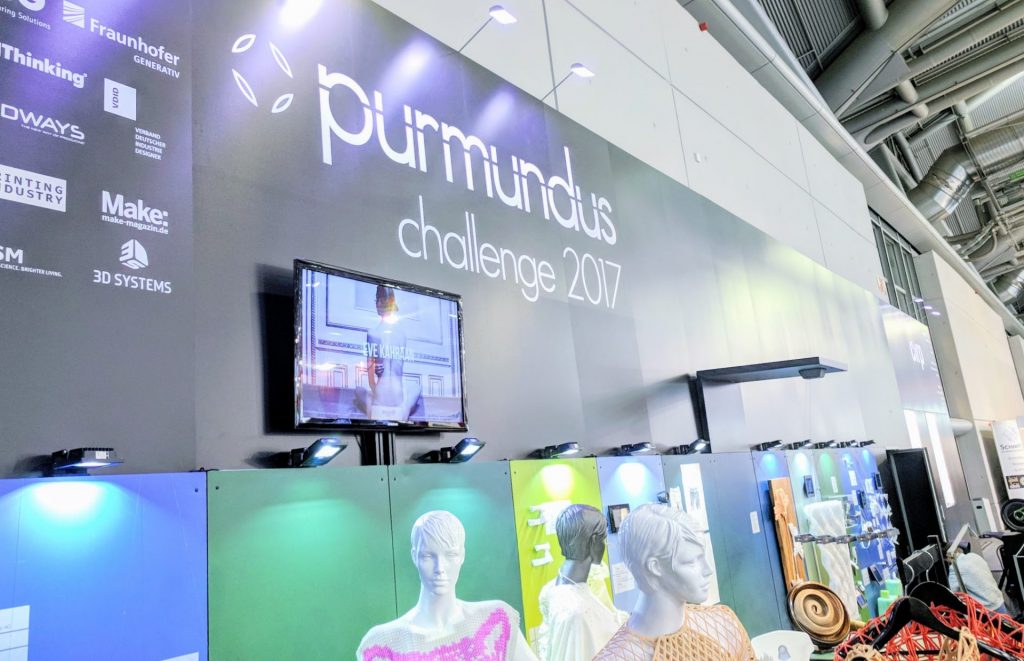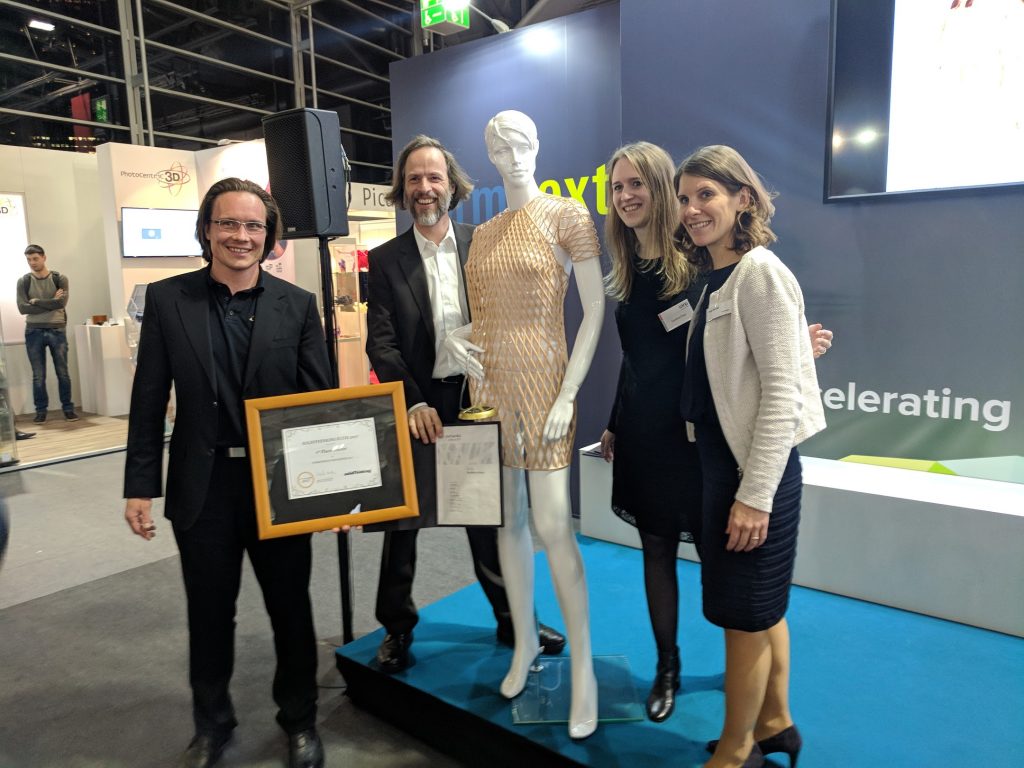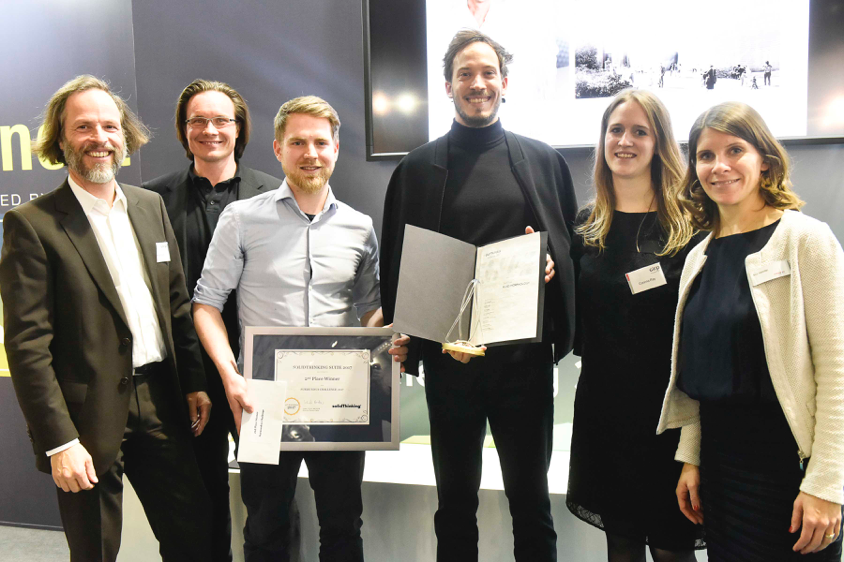The final of this year’s purmundus challenge took place at formnext 2017, sponsored once again by 3D Printing Industry. The competition invites designers, engineers and programmers to submit concept designs or market ready products that involve 3D printing.
The purmundus challenge is organized by cirp GmbH, an engineering and rapid prototyping service company based in Heimsheim, Germany. The contest is now in it’s fifth year.
This year’s challenge, which had the theme of Fusion, 3D printing intelligently combined saw six prize winners from the total 45 finalists, who were awarded a total of €12,000.
2017 winners Danit Peleg, TU München, Mecuris, Dorothee Clasen, Sascha Praet, Adam Pajonk, Dorothea Lang, and Go3D, were recognized at a formnext awards ceremony, that was, in the words of competition head Corinna Ray, “the highlight of a very successful trade fair and challenge.”

The winner, The Birth of Venus by Danit Peleg 3D
Sharing its name with the famous Botticelli painting, “The Birth of Venus” is a collection of garments that were 3D printed using FilaFlex filaments. The collection is based on a dress that featured in the Rio de Janeiro Paralympic opening ceremony.
The collection includes a made-to-measure bomber jacket, which is the first fully customizable and personalized 3D printed garment available to purchase online. The full jacket takes 100 hours to print and assemble, and its production generates no waste.
The jury found that Peleg’s range featured the “best fusion of elastic structure with various patterns and dimensions,” with a “unique process in fashion of individualized, tailor-made dresses.”

2nd prize, Fluid Morphology by TU München
Fluid Morphology is a research project led by TU München chair of design Prof. Moritz Mungenast, which demonstrates 3D printing’s potential in the construction sector.
The project produced the first translucent and multifunctional facade element to be entirely 3D printed. The piece was manufactured from polycarbonate and features embedded tubes to optimize insulation, ventilation, and even acoustics.
The TU München team was headed up by Mungenast, assisted by Oliver Tessin, Viktoria Blum, Tobias Gutheil, Olga Khuraskina, and Luc Morroni.
The jury noted that Fluid Morphology had the “advantage of free structural cladding for various buildings,” and were impressed by its incorporation of “load transfer, insulation, shading, daylight utilisation, ventilation, sound absorption” and “integrated illumination.”

3rd prize, Grasshopper AFO by Mecuris
The Grasshopper AFO is an externally applied orthotic device, custom made for patients from carbon fiber. It takes as little as 10 working days to produce from 3D data capture to delivery.
It specifically aims to help patients in regaining a normal walking gait, after suffering drop foot from conditions such as stroke, cerebral palsy, polio or multiple sclerosis.
The Mecuris team behind Grasshopper AFO consisted of Manuel Opitz, Clemens Rieth and Benjamin Els.
The jury was especially impressed by the construction of an AFO from just a 3D scan of the patients leg and technical detail, as well as the reduction of delivery time from 3 weeks to 10 days.
Mecuris was a winner in the 2016 purmundus challenge.

Special mention, Dynamic Algae by Dorothea Lang
Textile design student Dorothea Lang’s research focusses on the production of bio-printing material for additive manufacturing from renewable algae.
Algae has the advantage of being abundant all over the earth and the smart property of reacting to moisture.
The jury was particularly impressed by the “environmental aspects of the material and its potential.”
Innovation Prize, InFoam printing by Dorothee Clasen, Sascha Praet and Adam Pajonk
Clasen, Praet and Pajonk developed the idea for InFoam printing from a 5-day student workshop organized by materials company Covestro and held at FH Münster. They won the Innovation Prize, which recognizes projects that show how 3D printing will continue to change the world of product manufacturing.
InFoam is a technology for manufacturing “smart” foam, where a two-component resin is injected into the foam. Once the resin cures within the foam’s cell structure, it forms complex structures, which can have the qualities of rubber or plexiglass.
The technology may be used in upholstery, orthopedic shoe soles, car seats and even smart mattresses that can adjust to the shape of a person.

Public choice award, Ultimate Grip by Go3D
The public choice award went to Antti Korpi from Go3D, who created a personalized 3D printed knife handle.
The handle was 3D printed from aluminium directly on to a build plate without supports, and required minimal post-processing.
The Ultimate Grip has a net-shaped thin wall structure, which contains up to 90% less material than similar knives with an entirely solid structure. It weighs only 25g.
purmundus challenge 2018
3D Printing Industry looks forward to sponsoring next year’s purmundus challenge. The awards will be held on 15 November 2018 at formnext in Frankfurt am Main.
Nominations for the second annual 3D Printing Industry Awards are now open. Make your selections now.
For more information on 3D design, subscribe to our free 3D Printing Industry newsletter, follow us on Twitter, and like us on Facebook.
Featured image shows winners of the purmundus challenge 2017 together with members of the judging panel. Photo by Michael Petch.

